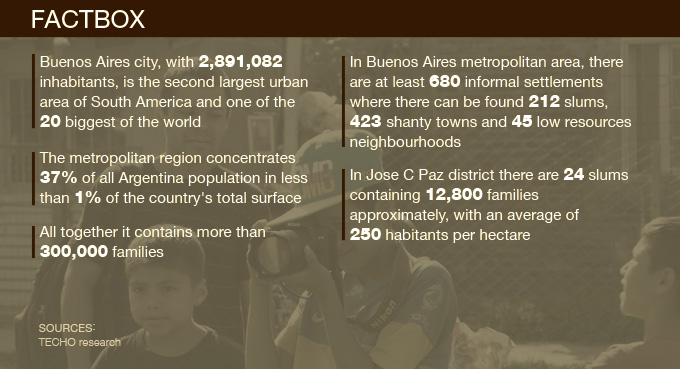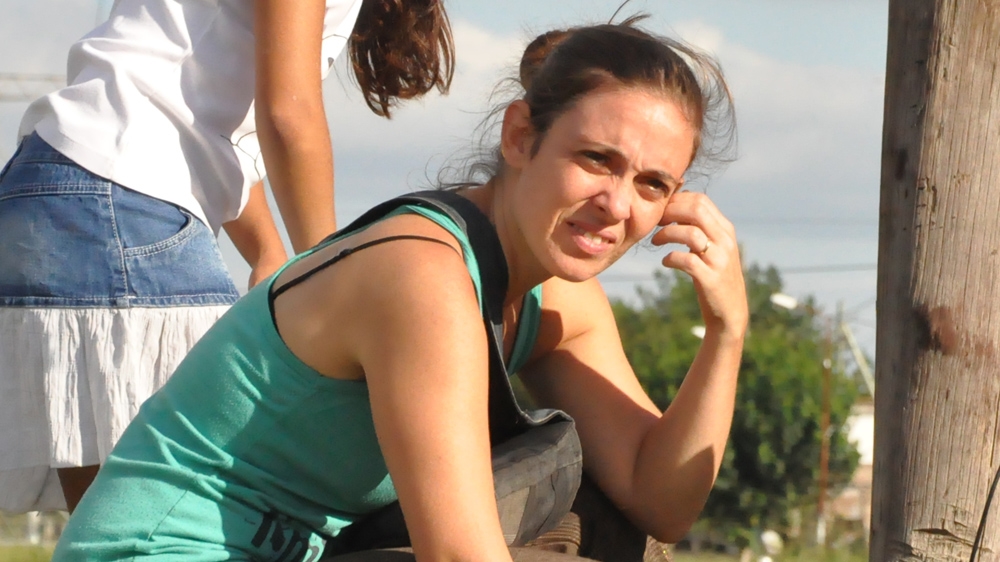
Eugenio’s Close Up: Inside the Slums of Buenos Aires
A professional photographer seeks to infuse his Buenos Aires slum with art, creativity and free expression.
The most concentrated population in the sprawling city of Buenos Aires, Argentina, is found in its slums.
As with so many of the marginalised shanty towns of Latin America, there is a wellspring of violence and economic despair. Caught in the ever-shifting instability of Argentina’s economy, there is little chance that these slums will be transformed or that their residents will be able to easily escape the country’s cyclical poverty.
Keep reading
list of 4 itemsCanadian Nobel-winning author Alice Munro dies aged 92
King Charles unveils royal portrait
Cannes film festival hopes for ‘no controversies’ as wars, scandals rage
Despite this for Eugenio, a 32-year-old photographer who still calls the slum of Villa 15 his home, there is a persistent richness to the life around him, and hope.
He teaches his profession to children and young children from these poor neighbourhoods. He is committed to following up on the work of his former teacher, Martin, who inspired him. So he works with children who live in this hostile environment, scarred by violence, delinquency and abuse, to inspire them to express themselves with photography. He seeks to infuse them with the same passion that he feels for creativity, art and learning.
Through different photographic activities he encourages his students, especially Carlitos, a close neighbour, to develop their own abilities and creativity. He seeks to prepare them for a life, despite their circumstances, that includes a sense of individual identity, artistic appreciation and an aspiration to see their own world differently. As he works with the children through the classes it will all lead up to a special presentation of their work in an exhibition in the city.
This film was first broadcast on Al Jazeera English in June 2015.

FILMMAKER’S VIEW
By Soledad Ahumada
Argentina’s capital city, Buenos Aires, hosts a large population in a very small territory.
|
Soledad Ahumada | |
Ana Soledad Ahumada studied Image and Sound design at Buenos Aires University and Direction of Photography at SICA. Ana has directed many TV documentaries for the Argentina Agriculture Ministry, among others. In her free time she teaches cinema to children in the ‘hidden city’ slum. With her camera, Ana tells stories with sensibility and has a flair for capturing the perfect moment. |
Sadly, immigration from surrounding Argentinian provinces and neighbouring countries often results in slums and shanty towns, where poor people live in crowded and destitute conditions.
At first, many of the residents think of this housing situation as a transition stage, though more often than not it becomes a permanent way of life.
Rife social inequality and lack of employment opportunities creates divisions in such crowded communities, where disadvantaged people are stopped from reaching their full potential.
Fortunately there are people who are trying to change this cycle of poverty and give their own time and knowledge to help people to succeed.
One such person is Eugenio.
I first met Eugenio when I was teaching cinematography workshops in the “hidden city”, the name given to a prominent slum in the city. Eugenio was teaching photography to a group of children from this community.
I have always admired Eugenio’s approach to teaching and, after getting to know him, I understood why. He used to be one of those marginalised children himself, living in a slum, dealing with the same sensation of exclusion and lack of possibility. Within this workshops he found a sense of inclusion and opportunity, as well as his dream career.
| Maite Diorio | |
Maite Diorio studied Cinema at La Plata University. Since starting her career in 2004, Maite has worked across several areas of production. Maite works at Cine Ojo, one of the most renowned production companies specialising in documentary in Argentina. She is also involved in the Doc Buenos Aires film festival. In 2006 Maite worked as a producer in an advertising production company. Years later, she started working as a freelance producer at Occidente Production company, where she worked as an executive producer on many projects. She has produced documentaries focusing on numerous themes, such as historical programming like Argentinean Presidents and the biopic Sarmiento, as well as non-fiction children’s programming like the award-winning show, When there is a team.
|
Eugenio decided to start this project in order to bring workshops to slums and shanty towns, where opportunities are few and far between.
I felt that it was important to tell Eugenio’s story.
The most important aspect of his project is the fact that he not only gives children the opportunity to study photography but also gives them the tools to express themselves, a “voice”.
Eugenio uses his own experience of growing up in a slum and replicates the chances he got as a child, hoping that one of his students will want to do the same in the future.
After several years of looking for a chance to tell this story, I met my producer, Maite, who helped to make it finally happen. It took us a long time to gain the confidence of the children. The neighbourhood was not easy, either. While we encountered some cooperation, we also found a lot of resistance.
The responsibility of working with young children forced us to be cautious and avoid dangerous situations. Despite the sensitivities, our primary objective was to show how the children used Eugenio’s workshops as a way to express themselves.
It is important for us to tell these kinds of stories and visualise these actions in order to let people see how social change can be achieved.
![Eugenio not only gives children the opportunity to study photography, but also gives them the tools to express themselves [ Al Jazeera]](/wp-content/uploads/2015/06/1e575a1c87574f768b57175a6b254951_18.jpeg)

